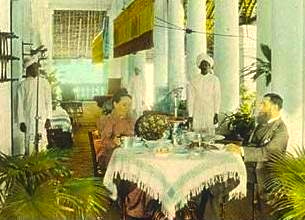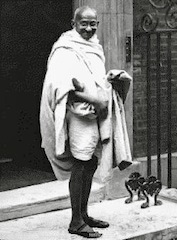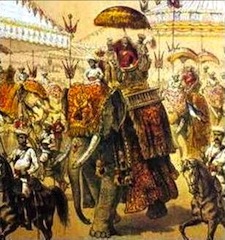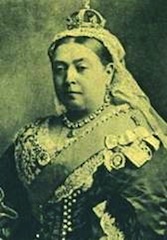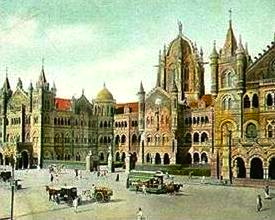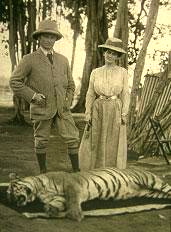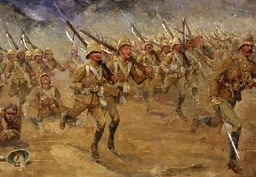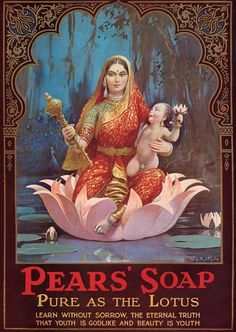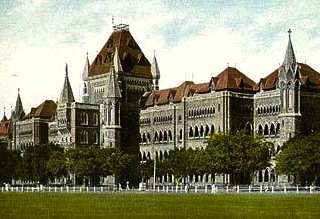| "India a nation! What an apotheosis! Last comer to the drab
nineteenth-century sisterhood! Waddling in at this hour of
the world to take her seat!" Fielding mocked again. And Aziz in an awful rage
danced this way and that, not knowing what to do, and cried:
"Down with the English anyhow. That's certain. Clear out,
you fellows, double quick, I say. We may hate one another,
but we hate you most... If it's fifty-five hundred years we shall be
rid of you, yes, we shall drive every blasted Englishman
into the sea, and then"—he rode against him furiously—"and
then," he concluded, half kissing him, "you and
I shall be friends…"
|
|
—E.M. Forster,
A Passage to India |
IT has been said that India is to Britain what the Old West is to America:
a romantic expression of the vision, energy, and frontier spirit of a
younger nation. Thus, the archetypal myth of empire, with its tales of
adventure and accomplishment, has long characterized the writing of
Indian history under British rule. The centuries-long relationship
between Britain and India is one of the great trans-cultural phenomena
of modern history and India has long been styled the "Jewel in the
Crown" of the British Empire.
The period known as the British Raj, which lasted eighty-nine years and
encompassed the pinnacle and decline of the British presence in the Indian
subcontinent, is today still mired in controversy and remains the subject
of lively historical debates. What were the driving ideologies behind
the Raj? What were its achievements and failures? How did the British
view themselves in India? How did they view Indian culture and how
pervasive was their control over Indian society? Finally, how did
the British experience in India help shape the identities of
present-day South Asia and Great Britain?
This seminar traces, both chronologically and thematically, the
various and often competing strands of British control over the Indian
subcontinent from the great mutiny of 1857 until the
independence of India and Pakistan in 1947. The scope of the readings
and discussions will include the ideological, political, technological,
social, psychological and cultural dimensions of the British Raj. The
first half of the course will be devoted to reading various primary
and secondary sources on British India. Through group discussion,
students will become acquainted with the most significant debates
and historical schools of thought about the British Empire in South
Asia. The second half of the course will be devoted to individual
research and presentations as students prepare their papers.
|


